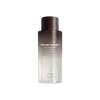Haruharu Wonder Black Rice Hyaluronic Toner For Sensitive Skin Versus Round Lab Mugwort Calming Toner
What's inside
What's inside
 Key Ingredients
Key Ingredients

 Benefits
Benefits

 Ingredients Side-by-side
Ingredients Side-by-side

Water
Skin ConditioningBetaine
HumectantGlycerin
HumectantPropanediol
SolventScutellaria Baicalensis Root Extract
AstringentOryza Sativa Extract
AbsorbentPhyllostachys Pubescens Shoot Bark Extract
Skin ConditioningXanthan Gum
EmulsifyingCellulose Gum
Emulsion Stabilising1,2-Hexanediol
Skin ConditioningButylene Glycol
HumectantPulsatilla Koreana Extract
Skin ConditioningZanthoxylum Piperitum Fruit Extract
Skin ConditioningUsnea Barbata Extract
Aspergillus Ferment
Skin ConditioningSodium Gluconate
Skin ConditioningHyaluronic Acid
HumectantBeta-Glucan
Skin ConditioningTamarindus Indica Seed Gum
Emulsion StabilisingPanax Ginseng Root Extract
EmollientGlucose
HumectantCyclodextrin
AbsorbentWater, Betaine, Glycerin, Propanediol, Scutellaria Baicalensis Root Extract, Oryza Sativa Extract, Phyllostachys Pubescens Shoot Bark Extract, Xanthan Gum, Cellulose Gum, 1,2-Hexanediol, Butylene Glycol, Pulsatilla Koreana Extract, Zanthoxylum Piperitum Fruit Extract, Usnea Barbata Extract, Aspergillus Ferment, Sodium Gluconate, Hyaluronic Acid, Beta-Glucan, Tamarindus Indica Seed Gum, Panax Ginseng Root Extract, Glucose, Cyclodextrin
Water
Skin ConditioningDipropylene Glycol
HumectantGlycerin
Humectant1,2-Hexanediol
Skin ConditioningGlycereth-26
HumectantArtemisia Vulgaris Extract
Skin ConditioningChondrus Crispus Extract
Skin ConditioningSaccharum Officinarum Extract
MoisturisingXylitol
HumectantArtemisia Princeps Leaf Extract
Skin ConditioningChlorella Vulgaris Extract
Skin ConditioningCamellia Sinensis Leaf Extract
AntimicrobialSalvia Officinalis Oil
MaskingTheobroma Cacao Seed Extract
AntioxidantPentylene Glycol
Skin ConditioningBetaine
HumectantPanthenol
Skin ConditioningPropanediol
SolventPolyglyceryl-10 Laurate
Skin ConditioningEthylhexylglycerin
Skin ConditioningAllantoin
Skin ConditioningDipotassium Glycyrrhizate
HumectantGlucose
HumectantButylene Glycol
HumectantFructooligosaccharides
HumectantFructose
HumectantBiosaccharide Gum-1
HumectantDextrin
AbsorbentMadecassoside
AntioxidantTocopherol
AntioxidantCarbomer
Emulsion StabilisingXanthan Gum
EmulsifyingWater, Dipropylene Glycol, Glycerin, 1,2-Hexanediol, Glycereth-26, Artemisia Vulgaris Extract, Chondrus Crispus Extract, Saccharum Officinarum Extract, Xylitol, Artemisia Princeps Leaf Extract, Chlorella Vulgaris Extract, Camellia Sinensis Leaf Extract, Salvia Officinalis Oil, Theobroma Cacao Seed Extract, Pentylene Glycol, Betaine, Panthenol, Propanediol, Polyglyceryl-10 Laurate, Ethylhexylglycerin, Allantoin, Dipotassium Glycyrrhizate, Glucose, Butylene Glycol, Fructooligosaccharides, Fructose, Biosaccharide Gum-1, Dextrin, Madecassoside, Tocopherol, Carbomer, Xanthan Gum
 Reviews
Reviews

Ingredients Explained
These ingredients are found in both products.
Ingredients higher up in an ingredient list are typically present in a larger amount.
1,2-Hexanediol is a synthetic liquid and another multi-functional powerhouse.
It is a:
- Humectant, drawing moisture into the skin
- Emollient, helping to soften skin
- Solvent, dispersing and stabilizing formulas
- Preservative booster, enhancing the antimicrobial activity of other preservatives
Betaine is a common humectant (a substance that promotes retention of moisture). It's known to be gentle on the skin and can help balance hydration.
This ingredient is best for improving hydration and soothing irritated skin. Studies also show it helps even out skin tone.
Fun fact: Betaine is naturally created in the skin and body. The kind found within cosmetic products can be either plant-derived or synthetic.
Another name for betaine is trimethylglycine.
Learn more about BetaineButylene Glycol (or BG) is used within cosmetic products for a few different reasons:
Overall, Butylene Glycol is a safe and well-rounded ingredient that works well with other ingredients.
Though this ingredient works well with most skin types, some people with sensitive skin may experience a reaction such as allergic rashes, closed comedones, or itchiness.
Learn more about Butylene GlycolGlucose is a simple sugar and is the most important source of energy in all organisms.
In skincare, glucose is used to hydrate the skin. It also acts as a prebiotic for our natural biome.
Glucose is hydrating due to its humectant property. As a humectant, glucose draws moisture from the air and from deeper levels in the skin.
Our skin contains many sugars that act as prebiotics and help strengthen our natural microbiome. Having a healthy microbiome helps protect our skin from harmful bacteria and other contaminants.
Studies show glucose may help with fading discoloration and pigmentation. This is because our skin metabolizes glucose into lactic acid. Lactic acid is an AHA that helps exfoliate the top layer of skin.
Learn more about GlucoseGlycerin is already naturally found in your skin. It helps moisturize and protect your skin.
A study from 2016 found glycerin to be more effective as a humectant than AHAs and hyaluronic acid.
As a humectant, it helps the skin stay hydrated by pulling moisture to your skin. The low molecular weight of glycerin allows it to pull moisture into the deeper layers of your skin.
Hydrated skin improves your skin barrier; Your skin barrier helps protect against irritants and bacteria.
Glycerin has also been found to have antimicrobial and antiviral properties. Due to these properties, glycerin is often used in wound and burn treatments.
In cosmetics, glycerin is usually derived from plants such as soybean or palm. However, it can also be sourced from animals, such as tallow or animal fat.
This ingredient is organic, colorless, odorless, and non-toxic.
Glycerin is the name for this ingredient in American English. British English uses Glycerol/Glycerine.
Learn more about GlycerinPropanediol is an all-star ingredient. It softens, hydrates, and smooths the skin.
It’s often used to:
Propanediol is not likely to cause sensitivity and considered safe to use. It is derived from corn or petroleum with a clear color and no scent.
Learn more about PropanediolWater. It's the most common cosmetic ingredient of all. You'll usually see it at the top of ingredient lists, meaning that it makes up the largest part of the product.
So why is it so popular? Water most often acts as a solvent - this means that it helps dissolve other ingredients into the formulation.
You'll also recognize water as that liquid we all need to stay alive. If you see this, drink a glass of water. Stay hydrated!
Learn more about WaterXanthan gum is used as a stabilizer and thickener within cosmetic products. It helps give products a sticky, thick feeling - preventing them from being too runny.
On the technical side of things, xanthan gum is a polysaccharide - a combination consisting of multiple sugar molecules bonded together.
Xanthan gum is a pretty common and great ingredient. It is a natural, non-toxic, non-irritating ingredient that is also commonly used in food products.
Learn more about Xanthan Gum